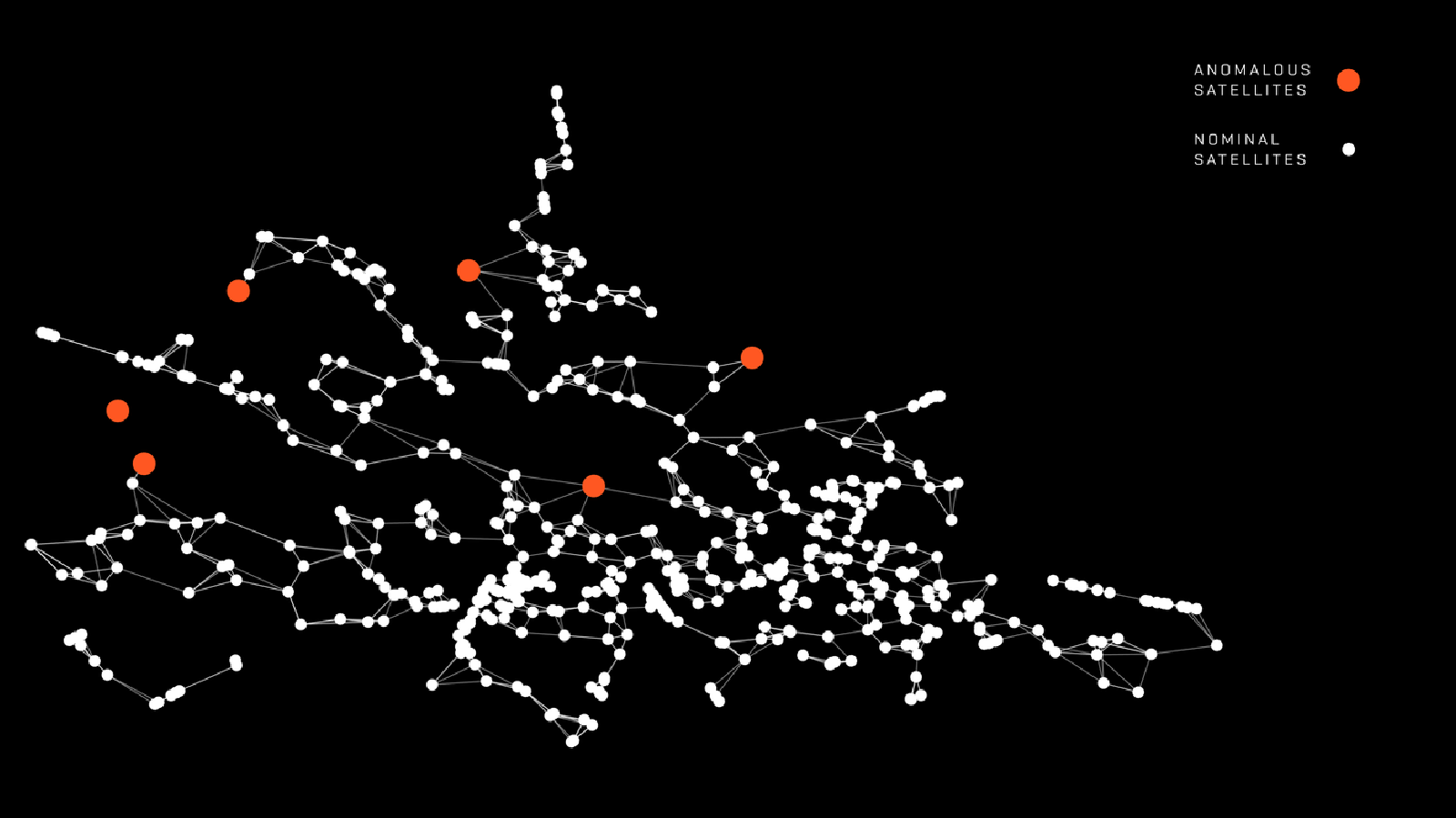Stay Up to Date
Submit your email address to receive the latest industry and Aerospace America news.
Software aims to pierce the fog of megaconstellations
This article has been updated to correct the reference to Slingshot’s telescopes. The 200 figure refers to the number of telescopes and cameras.
Slingshot Aerospace and DARPA revealed today that they spent 10 months developing an artificial intelligence tool for discriminating a spy satellite from surrounding spacecraft and predicting its intentions.
The tool, called Agatha, ingests observations from Slingshot’s 200 space-tracking cameras and telescopes around the world, information from the U.S. Space Force’s publicly available catalog of spacecraft and other data sources, such as satellite communication records, and looks for unusual maneuvers or other behavior.
“Its intention is to identify potentially nefarious satellite outliers hidden within large constellations,” said Dylan Kesler, director of data science and artificial intelligence at the El Segundo, California, company.
Industry watchers, including Kesler, say the Chinese government and Chinese corporations have big plans to launch thousands of small communications satellites. Kesler puts the figure at 35,000 satellites in three constellations. In April 2023, for instance, the Washington Post reported that China plans to deploy “a national mega-contellation of almost 13,000 low-orbit satellites” as an answer to SpaceX’s Starlink constellation. The concern is that Chinese spy satellites could be dispersed among them.
The month before the Washington Post story, Slingshot and DARPA quietly began their Agatha development program, called PRECOG, short for Predictive Reporting and Enhanced Constellation Objective Guide. The $1 million program concluded in January.
The names Agatha and PRECOG were drawn from the 2002 movie “Minority Report.” The character Agatha is the leader of the “PreCog” prophets who can see into the future and are enlisted to prevent murders.
“Slingshot is now focused on implementing its powerful Agatha AI system and is engaged in ongoing discussions with the U.S. government and commercial space companies about methods for deploying Agatha as part of their advanced space domain awareness services,” the company said in a press release that was embargoed until this morning. A version of Agatha is currently available to Slingshot’s customers.
One of Agatha’s algorithms taps the inverse reinforcement learning technique that “uses AI to evaluate behaviors and identify the policies and intentions of the objects it tracks,” Slingshot said in the press release.
Agatha also employs traditional reinforcement learning to train its AI on simulated satellite tracking data to find differently behaving satellites, Kesler said.
About Keith Button
Keith has written for C4ISR Journal and Hedge Fund Alert, where he broke news of the 2007 Bear Stearns hedge fund blowup that kicked off the global credit crisis. He is based in New York.
Related Posts
Stay Up to Date
Submit your email address to receive the latest industry and Aerospace America news.




